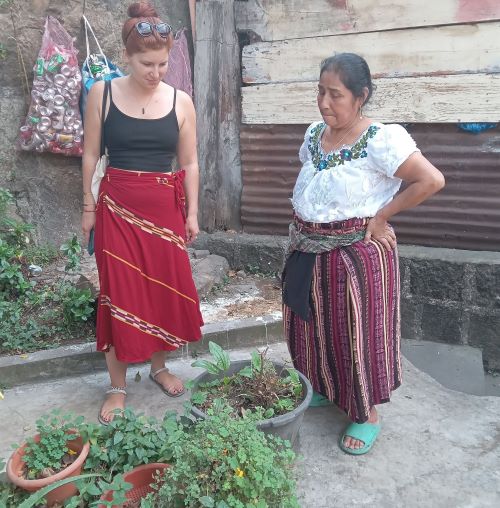Who grew your herbs?
Christina is a fourth-generation Mayan healer and medicinal herb cultivator. She operates a tiny clinic in the town of San Pedro La Laguna, Lake Atitlan, Guatemala. She greets visitors in a herb garden behind her clinic. As I will describe below, all of her herbs are of a single origin, and she follows Landrace traditions by cultivating local, indigenous plant kinds. I know the herbs I sell are pure and non-GMO.
In botany, the term herb refers to a herbaceous plant, which is a tiny, seed-bearing plant without a woody stem and whose aerial portions (those above ground) fade back to the ground after each growing season.
When it comes to medicinal herbs, “single-origin” refers to herbs sourced from a specific, defined area, such as a particular farm, region, or specific growing environment. This contrasts with blended herbs, which often combine components from various sources. Here’s a breakdown of the meaning in this context:
Key aspects of single-origin medicinal herbs:
- Specificity: They come from a clearly defined and controlled source, unlike blended herbs with potentially diverse origins.
- Potential for unique properties: The specific environment and growing conditions can influence the chemical composition and therapeutic properties of the herbs.
- Traceability: Knowing the origin allows for greater transparency and confidence in the farming practices and sustainability of the product.
- Customization: You have more control over the specific plant material you’re using for your intended purpose.
Landrace herbal medicine gardening, also known as ethnobotanical gardening, is a practice deeply rooted in the cultural traditions of Guatemala.
It involves cultivating local, indigenous varieties of plants with medicinal properties that have been passed down through generations.
These plants, known as landraces, are adapted to the specific growing conditions of their region and often possess unique medicinal qualities.
History and Significance:
- The Maya civilization, which flourished in Guatemala for centuries, had a vast knowledge of medicinal plants. This knowledge continues to be passed down through indigenous communities today.
- Landrace herbal medicine gardens play a crucial role in providing affordable healthcare for many Guatemalans, particularly in rural areas with limited access to conventional medicine.
- These gardens also contribute to the preservation of biodiversity and traditional ecological knowledge.



 Joan Cass
Joan Cass Joan Cass
Joan Cass